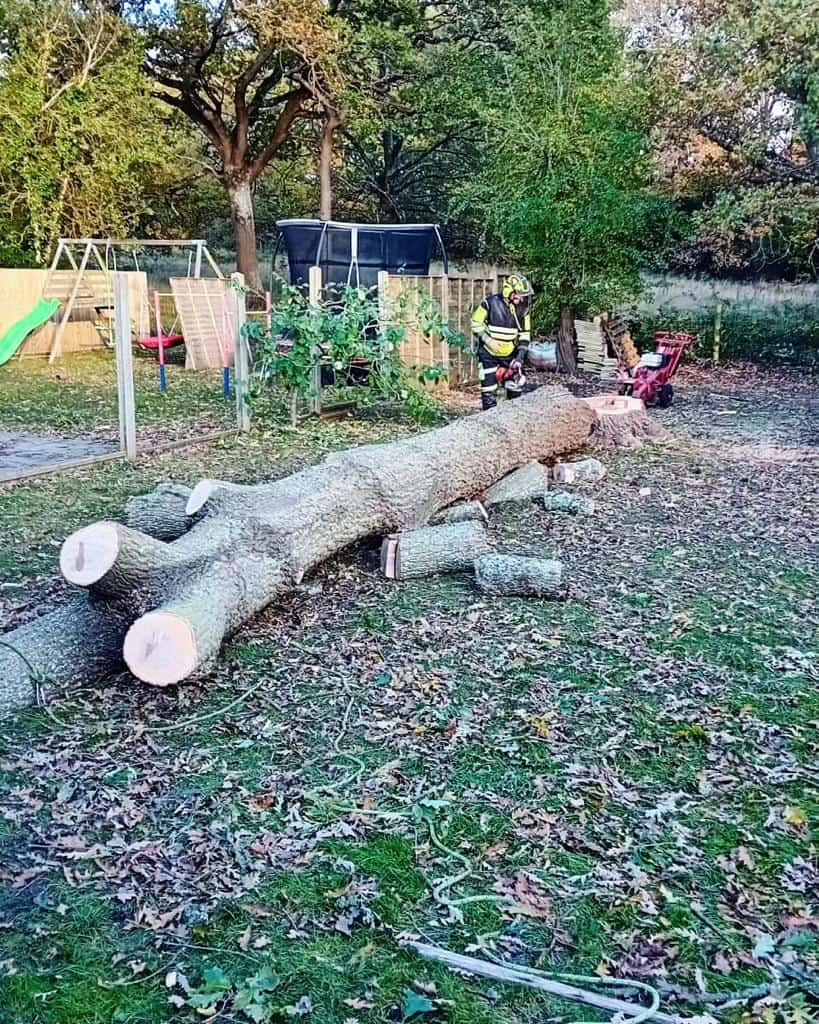Pruning is one of the most essential aspects of tree care — not just for maintaining an attractive shape, but for ensuring long-term health, safety, and growth stability. When done properly, pruning helps trees flourish, resist disease, and remain structurally sound for years to come. At NS Tree Surgery Horley, we regularly carry out professional pruning for clients across Horley, Surrey, ensuring their trees stay healthy, balanced, and well-maintained. Here, we share expert insights and simple tips on how pruning can keep your trees in their best possible condition.
Why Pruning Matters for Tree Health
Pruning isn’t just about aesthetics; it’s a vital maintenance practice that influences how a tree grows and thrives. By removing dead, diseased, or overcrowded branches, you allow more light, air, and nutrients to reach healthy parts of the canopy.
The main benefits include:
- Encouraging strong, balanced growth: Strategic trimming guides branches to grow in safe, stable directions.
- Preventing disease spread: Cutting out infected limbs stops decay from moving further into the tree.
- Reducing wind resistance: A lighter, more open canopy is less likely to suffer damage in strong winds.
- Improving air circulation and sunlight exposure: This promotes healthier foliage and reduces fungal growth.
- Enhancing appearance: A well-pruned tree looks more structured and adds value to your landscape.
When performed regularly by professionals such as NS Tree Surgery Horley, pruning becomes an essential form of preventative care — ensuring minor issues never turn into major problems.
Knowing When to Prune Your Trees
One of the most important aspects of pruning is timing. Different trees respond best to pruning at certain times of year, depending on their growth cycle and species.
General guidelines include:
- Late winter to early spring: Ideal for most deciduous trees, as they are dormant and less likely to experience sap bleeding or stress.
- Mid-summer: Suitable for shaping or controlling growth once the main flush of the season has passed.
- Autumn and early winter: Avoid heavy pruning during this time, as trees are more susceptible to decay and fungal infection.
In Horley’s mild but changeable Surrey climate, pruning schedules may need slight adjustments depending on seasonal conditions. Consulting experienced arborists like NS Tree Surgery Horley ensures that pruning is timed correctly for maximum benefit.
The Key Types of Pruning
Understanding the different types of pruning helps you recognise what your trees might need. Each serves a specific purpose in maintaining health and structure.
1. Crown Cleaning
This involves removing dead, diseased, or weak branches from the canopy. It’s one of the most common maintenance practices and improves both appearance and airflow.
2. Crown Thinning
Thinning reduces density within the canopy, allowing better light penetration and reducing wind resistance. It’s especially beneficial for mature trees that have grown dense over time.
3. Crown Reduction
When a tree becomes too large or starts encroaching on buildings or power lines, crown reduction helps control its height or spread. Unlike topping (an improper and damaging method), professional reduction retains the tree’s natural shape and vitality.
4. Crown Lifting
This technique removes lower branches to increase clearance for pedestrians, vehicles, or garden areas. It’s often used for urban trees where space is limited.
5. Formative Pruning
Performed on young trees, formative pruning establishes a strong, balanced structure early on, preventing structural issues as the tree matures.
Each of these pruning techniques contributes to the long-term stability and beauty of your trees when applied correctly and at the right time.
Signs Your Tree May Need Pruning
Not all trees require frequent pruning, but certain signs indicate when attention is necessary. Keep an eye out for:
- Dead or decaying branches showing signs of rot or fungus.
- Crossing or rubbing limbs that could cause wounds or weak points.
- Overextended branches near property lines, roofs, or power cables.
- Dense or heavy canopies that block sunlight from reaching the ground.
- Storm damage that leaves cracked or hanging branches.
If you notice these symptoms, prompt professional assessment from NS Tree Surgery Horley can prevent further damage and ensure the right pruning techniques are applied.
Avoiding Common Pruning Mistakes
While it may seem simple, improper pruning can harm a tree rather than help it. Over-cutting, poor technique, or the wrong timing can lead to stress, disease, or irreversible damage.
Mistakes to avoid:
- Topping or excessive cutting: Removing too much foliage can starve the tree of nutrients and cause weak regrowth.
- Incorrect cuts: Cutting too close or too far from the branch collar (the swollen base) can interfere with healing.
- Ignoring disease signs: Pruning infected limbs without sterilising tools can spread pathogens to healthy branches.
- Neglecting aftercare: Trees need time and monitoring to recover after pruning. Watering and mulching support the healing process.
Professional tree surgeons are trained to avoid these pitfalls, ensuring each cut benefits the tree rather than compromises its health.
The Role of Professional Tree Surgeons
Although light maintenance pruning can sometimes be managed by property owners, larger trees and complex pruning should always be left to qualified professionals. Proper pruning requires skill, safety equipment, and knowledge of tree biology to ensure the best results.
At NS Tree Surgery Horley, we take a tailored approach to each tree, evaluating its species, age, and surroundings before carrying out precise pruning work. Our goal is always to enhance the tree’s natural structure while safeguarding its long-term wellbeing.
Maintaining Tree Health Beyond Pruning
Pruning is just one part of a comprehensive tree care plan. To keep your trees strong and resilient throughout the year, consider additional maintenance practices such as:
- Regular inspections to identify pests, diseases, or structural issues early.
- Mulching around the base to retain soil moisture and regulate temperature.
- Appropriate watering during dry spells, especially for young or recently pruned trees.
- Avoiding soil compaction by limiting foot traffic around root zones.
These simple steps, combined with periodic pruning, ensure your trees continue to thrive and enhance your landscape for generations.
Why Pruning Is Essential in Urban Areas Like Horley
Urban and suburban environments can be harsh on trees. Restricted root space, pollution, and competition for sunlight all affect growth and stability. Regular, professional pruning helps trees adapt to these conditions by managing size, promoting airflow, and maintaining safety around buildings and public spaces.
In towns like Horley, where mature trees contribute significantly to the local environment and character, responsible maintenance is crucial. At NS Tree Surgery Horley, we’re dedicated to preserving this natural beauty while ensuring every tree remains safe and healthy.
Conclusion
Pruning is one of the most effective ways to promote tree health, balance growth, and prevent potential hazards. By removing weak, diseased, or overcrowded branches, you allow your trees to grow stronger, healthier, and more resilient. For homeowners and property managers in Horley, Surrey, professional care from NS Tree Surgery Horley ensures your trees receive the attention they need to thrive. With regular, well-timed pruning, you can enjoy a safer, more vibrant landscape that benefits both your property and the local environment.
Call us on: 01293 225 592
Click here to find out more about NS Tree Surgery Horley
Click here to complete our contact form and see how we can help with your tree needs.

